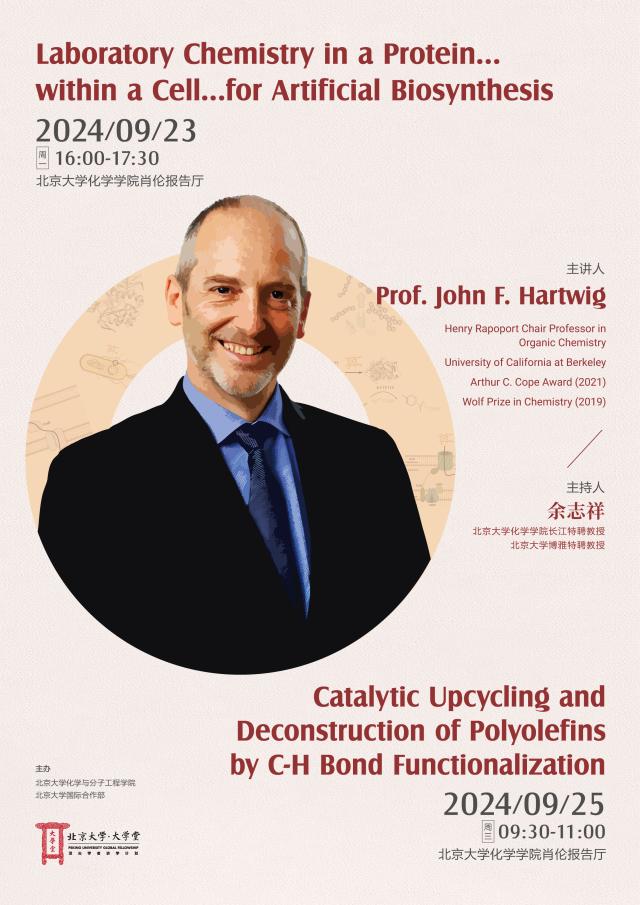
Abstract
Laboratory Chemistry in a Protein… within a Cell…for Artificial Biosynthesis
The introduction of functional groups at the positions of typically unreactive C-H bonds site-selectively and the stereo- and regio-selective functionalization of unconjugated C=C bonds have been longstanding challenges in catalysis. To this end, our group has been motivated by the limits of small-molecule catalysts for such reactions to begin to investigate artificial metalloenzymes. These artificial metalloenzymes contain synthetic cofactors possessing abiotic metal centers that catalyze unnatural reactions with control over selectivity resulting from the protein environment. In the best-case scenario such reactions could occur within the cells of E. coli or other microorganisms and in the long-term to occur as part of an unnatural biosynthetic pathway to produce unnatural products by fermentation. This talk will include results on new transformations, new mechanisms, new reactive intermediates, and new methods for in vivo assembly of artificial metalloenzymes. This combination of results has enabled us to combine an unnatural carbene-transfer reaction catalyzed by natural and artificial metalloenzymes with the biosynthesis of diazo compounds and natural reactions of a heterologous biosynthetic pathway to create engineered microorganisms that produce unnatural products by artificial biosynthesis encompassing organometallic chemistry.1
References
(1) Key, H. M.; Dydio, P.; Liu, Z.; Rha, J. Y. E.; Nazarenko, A.; Seyedkazemi, V.; Clark, D. S.; Hartwig, J. F. Beyond Iron: Iridium-Containing P450 Enzymes for Selective Cyclopropanations of Structurally Diverse Alkenes. ACS Cent. Sci. 2017, 3 (4), 302-308. DOI: 10.1021/acscentsci.6b00391. Huang, J.; Liu, Z.; Bloomer, B. J.; Clark, D. S.; Mukhopadhyay, A.; Keasling, J. D.; Hartwig, J. F. Unnatural biosynthesis by an engineered microorganism with heterologously expressed natural enzymes and an artificial metalloenzyme. Nat. Chem. 2021, 13 (12), 1186-1191. DOI: 10.1038/s41557-021-00801-3
Catalytic Upcycling and Deconstruction of Polyolefins by C-H Bond Functionalization
Every year, we generate 500 billion pounds of new plastics. Most of this material is used in low-value, single use applications of polyethylene, polypropylene, and to a lesser degree polyethylene terephthalate. Determining how to enable polyolefins to be used for higher value applications, how to imbue these materials with functional groups that could facilitate recycling, and how to install functionality that can trigger deconstruction are current topics in the growing field of catalytic polyolefin upcycling. In this seminar, I will present our early results on polyolefin functionalization and current results on a variety of transformations of polyolefins that install functional groups to change properties and that enable deconstruction to just one or two products in high demand with two or more catalysts working cooperatively.